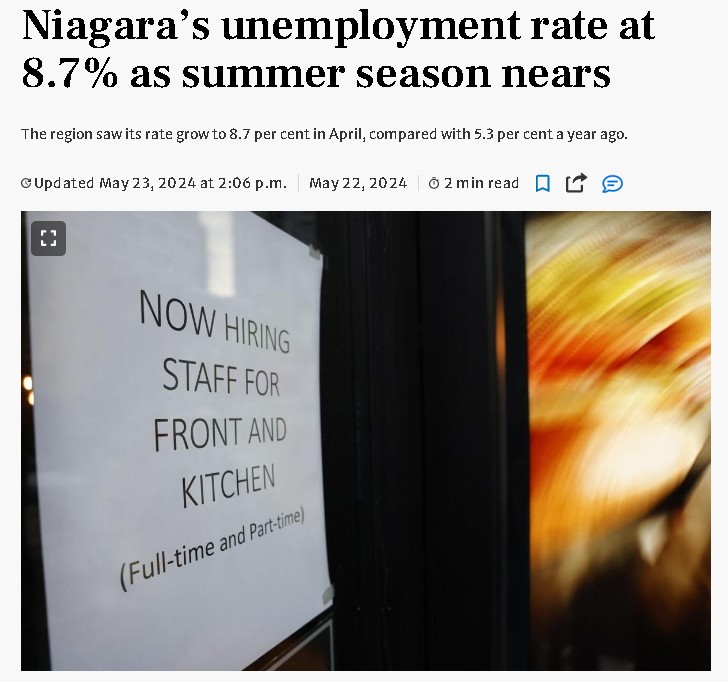The Niagara Region’s current unemployment rate stands at 8.7%, significantly higher than Ontario’s 5.5% and the national average of 6.1%.
This disparity has sparked concern and criticism towards MP Chris Bittle and his government’s immigration policies, which the I and others argue exacerbates local job market challenges by increasing competition for a limited number of jobs. Several of Chris Bittle and his government programs and initiatives are designed to support ONLY newcomers and are seen as contributing to the problem.
These include;
1. Ontario Immigrant Nominee Program (OINP): This program allows the province to nominate individuals for permanent residency based on their skills and experience. It targets workers in critical sectors experiencing labor shortages, such as healthcare and information technology.
2. Removing Unfair Work Barriers: The Ontario government is working to eliminate barriers for internationally-trained professionals. This includes banning the requirement for Canadian work experience in job postings and application forms, which helps immigrants who have relevant experience from their home countries to qualify for jobs more easily.
3. Job Training and Language Programs: Ontario offers various free training programs to help newcomers develop job-specific skills and language proficiency. These initiatives aim to align immigrants’ qualifications with the demands of the local job market, enhancing their employability.
4. Support for Skilled Immigrants: The government has invested in programs to assist skilled immigrants in obtaining the necessary credentials and licenses to practice their professions in Ontario. This includes initiatives for faster recognition of foreign credentials and providing financial support for retraining.
5. Targeted Job Matching Services: Ontario provides specialized job matching and employment services for newcomers. These services connect immigrants with employers looking for their specific skills and help them navigate the job market more effectively.
- 2014: 260,404
- 2015: 271,845
- 2016: 296,346
- 2017: 286,500
- 2018: 321,055
- 2019: 341,180
- 2020: 341,000
- 2021: 184,000
- 2022: 401,000
- 2023: 405,000

The continuous influx of newcomers, especially in St. Catharines and Southern Ontario as a whole has intensified the competition for jobs, making it harder for local workers to find and retain employment. I call for a limited and temporary halt to immigration until the job market stabilizes and the economy improves.
I argue that Chris Bittle and his government must prioritize the employment needs of Canadians, particularly in regions like Niagara where unemployment rates are high. They should be advocating for policies that support local workers, create fair-paying jobs and foster economic stability before welcoming any more newcomers.
I encourage open dialogue on this issue, emphasizing that all perspectives should be respected and considered in the debate on immigration and employment policies.
My platform seeks to ensure that the voices of local workers are heard and addressed in the formulation of government policies.


